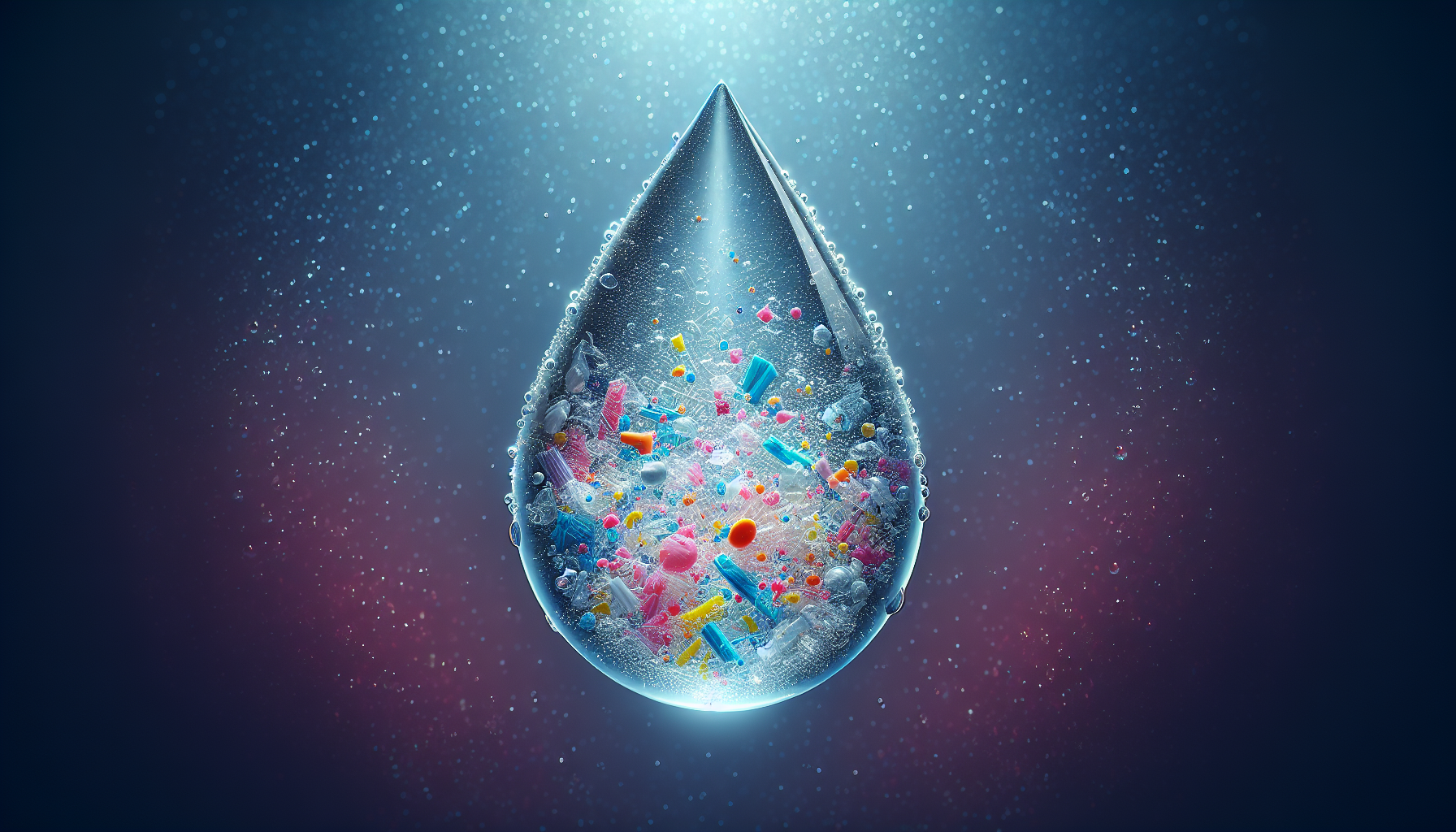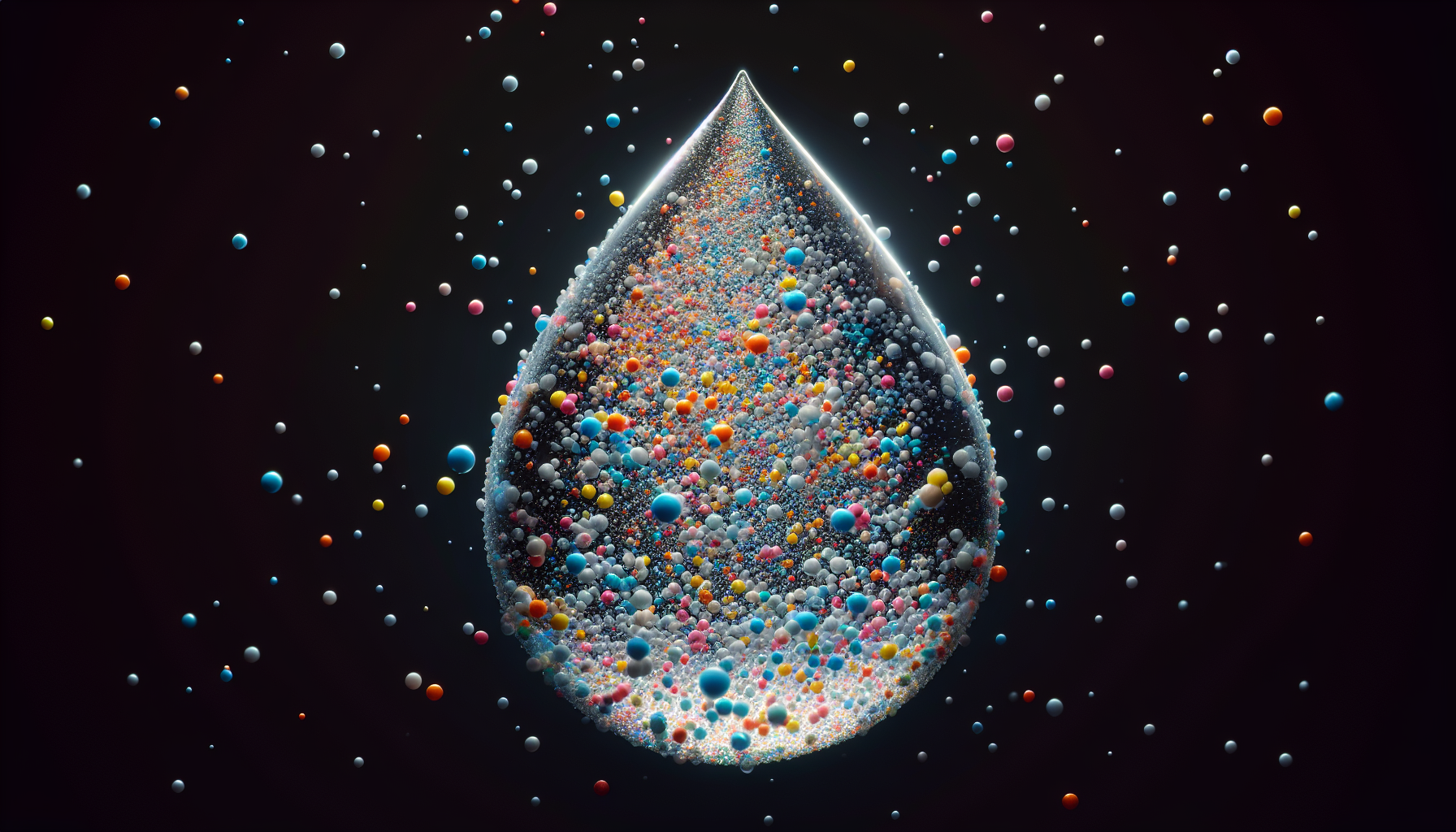In this article, we will explore the topic of treating well water that contains high levels of microplastics. You may be wondering what methods are available to effectively minimize the presence of these tiny plastic particles in your well water. Discovering the most suitable treatment methods for microplastics in well water is crucial for ensuring the health and safety of you and your loved ones. Join us as we delve into the various options and solutions that can help address this growing concern.
Overview of Microplastics in Well Water
Microplastics are small plastic particles that are less than 5mm in size and are a major environmental concern worldwide. These particles can come from a variety of sources, including the breakdown of larger plastic items, synthetic fibers from clothing, and microbeads commonly found in cosmetic products. Microplastics can enter well water through various means such as surface runoff, atmospheric deposition, and wastewater discharges.
The presence of microplastics in well water raises significant health and environmental concerns. Studies have shown that microplastics can accumulate in organisms and potentially transfer harmful chemicals. Ingestion of microplastics by humans and wildlife can lead to adverse health effects such as inflammation, oxidative stress, and the disruption of hormone regulation. Moreover, the environmental impacts of microplastics are still being investigated, but initial studies suggest that they can harm aquatic ecosystems and contribute to the biosorption of persistent organic pollutants.
Given the potential risks associated with microplastics in well water, it is crucial to develop effective treatment methods to remove these particles and ensure the safety of drinking water.
Testing and Analysis Methods
To effectively address microplastic contamination in well water, it is essential to employ suitable testing and analysis methods. Water sampling techniques play a vital role in collecting representative samples for analysis. Common methods include grab sampling, in which water is collected directly from the well, and passive sampling, which utilizes devices to capture microplastics over a specific period. These methods help determine the distribution and concentrations of microplastics in the well water.
Once samples are collected, microplastic identification and quantification can be performed. Microscopy techniques, such as optical and electron microscopy, help identify different types of microplastics based on their physical characteristics. Additionally, Fourier-transform infrared spectroscopy (FTIR) and Raman spectroscopy provide chemical analysis and help distinguish microplastics from other particles.
Laboratory analysis further aids in understanding the composition and characteristics of microplastics. Particle counting, size distribution analysis, and polymer type identification are common techniques used in the laboratory. These methods help determine the abundance and types of microplastics present, enabling the development of effective treatment methods.

Physical Treatment Methods
Several physical treatment methods have shown promise in removing microplastics from well water. Filtration systems, such as activated carbon filters, reverse osmosis membranes, and multimedia filters, can effectively capture microplastic particles. Sedimentation and flotation processes can be employed to separate microplastics from water by exploiting the difference in density. Centrifugation techniques utilize centrifugal force to separate microplastics from water based on their size and density. Coagulation and flocculation processes involve the addition of chemicals to promote the formation of larger particles that can be easily removed.
Chemical Treatment Methods
Chemical treatment methods can also be employed to tackle microplastic contamination in well water. Oxidation processes, such as advanced oxidation and ozone treatment, utilize powerful oxidizing agents to degrade and break down microplastics. Adsorption techniques, including activated carbon adsorption and ion exchange, involve the use of sorbents to bind and remove microplastic particles. Advanced oxidation processes combine oxidation and adsorption techniques to enhance microplastic removal efficiency.

Biological Treatment Methods
Biological treatment methods offer an alternative approach to addressing microplastic contamination. Biodegradation, using microorganisms capable of metabolizing plastic polymers, can facilitate the breakdown of microplastics into harmless byproducts. Biofilm technologies, such as biofiltration and bioreactors, employ specially cultivated microbial communities to capture and break down microplastics. The presence of diverse microbial communities can enhance the removal efficiency of microplastics in well water.
Combined Treatment Approaches
Combining different treatment methods can often yield more effective results in removing microplastics from well water. Physical-chemical treatment combines physical separation techniques with chemical processes, providing a synergistic effect. Physical-biological treatment utilizes physical methods along with biological processes to promote microplastic removal. Chemical-biological treatment integrates chemical and biological treatment methods for enhanced efficiency. Finally, physical-chemical-biological treatment combines all three approaches to maximize microplastic removal.

Effectiveness Assessment
Evaluating the effectiveness of different treatment methods is crucial in selecting the most suitable approach for well water contaminated with microplastics. Removal efficiency, measured as the percentage of microplastics removed, is an important consideration. The size of microplastic particles is also crucial, as smaller particles may require specific treatment techniques. Furthermore, it is essential to assess the impact of treatment methods on overall water quality parameters, such as pH, turbidity, and dissolved oxygen levels. Economic viability is also a key factor, as it helps determine the feasibility of implementing treatment options.
Considerations for Well Water Treatment
When choosing treatment methods for microplastics in well water, several considerations should be taken into account. Site-specific conditions, such as well depth, flow rate, and water chemistry, can influence the selection of treatment options. The overall water usage and flow rate should also be considered to ensure the chosen treatment method can handle the required volume. Maintenance and operational requirements play a vital role in sustaining the effectiveness of treatment systems. Finally, long-term sustainability, including the energy requirements and environmental impacts of treatment methods, must be considered.

Regulatory Framework and Guidelines
Existing regulations and guidelines provide a basis for addressing microplastics in well water. Many countries have regulations in place regarding drinking water quality, although microplastics are not yet explicitly covered. However, guidelines for microplastic concentrations in drinking water are being developed by various organizations, such as the World Health Organization (WHO) and the United States Environmental Protection Agency (EPA). Future policy implications may include the establishment of specific regulations and guidelines for microplastic levels in well water, as awareness of the issue grows.
Conclusion
In conclusion, several effective treatment methods are available for addressing microplastics in well water. Physical treatment methods, such as filtration, sedimentation, flotation, centrifugation, and coagulation, provide various options for removing microplastics. Chemical treatment methods, including oxidation and adsorption techniques, offer additional options for effective microplastic removal. Biological treatment methods, such as biodegradation and biofilm technologies, provide innovative approaches to tackle microplastic contamination. Combined treatment approaches, such as physical-chemical, physical-biological, chemical-biological, and physical-chemical-biological treatment, offer synergistic effects.
Assessing the effectiveness of treatment methods, considering particle size, removal efficiency, and impact on water quality parameters, is crucial in selecting the most suitable approach. Additionally, various considerations, including site-specific conditions, water usage, maintenance requirements, and long-term sustainability, need to be taken into account.
Although specific regulations and guidelines for microplastic concentrations in well water are still developing, it is important to continue monitoring and researching this issue. Continuous monitoring, along with future research directions, can further improve our understanding of microplastic contamination and facilitate the development of more effective treatment methods. By addressing microplastics in well water, we can ensure the safety and sustainability of our water resources for generations to come.


